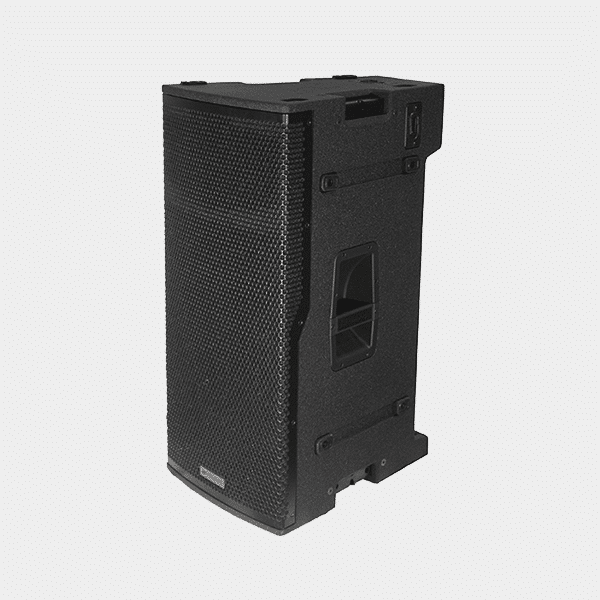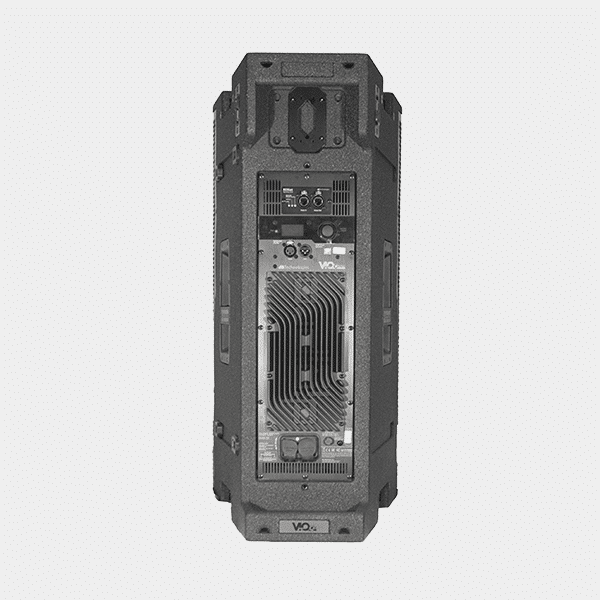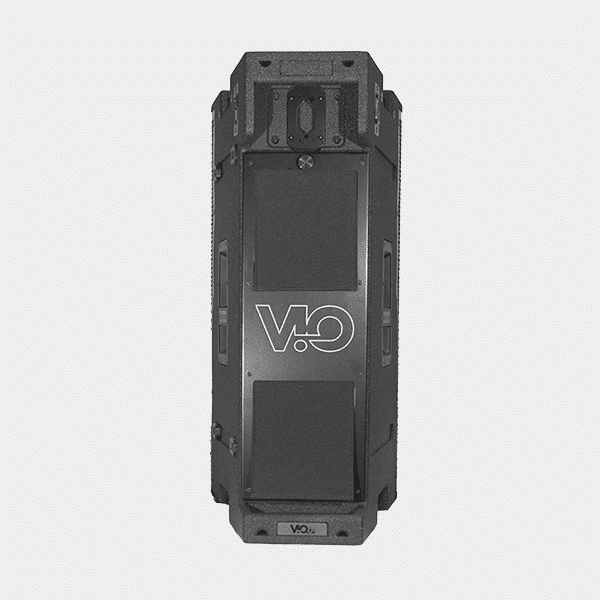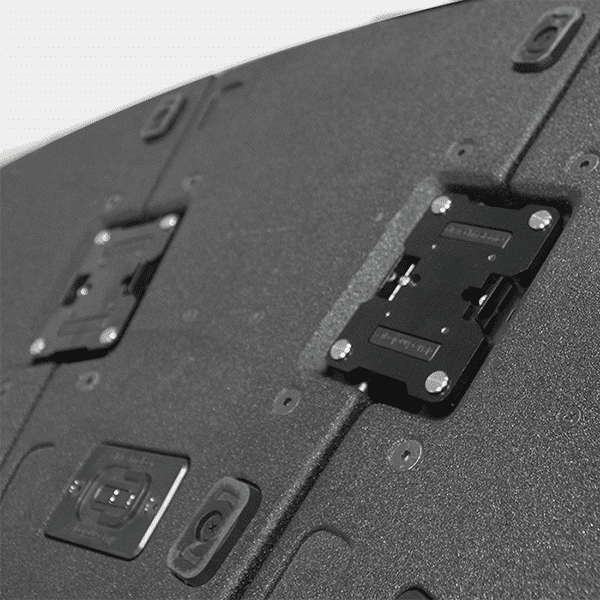VIO C12 – 2-Way Active Cluster Loudspeaker
The series encompasses 3 enclosures housing premium neodymium components: VIO C12 (1×12”, 3.5” v.c. LF and 1×1.4”exit, 3” v.c. HF), VIO C15 (1×15”, 3.5” v.c. LF and 1×1.4” exit, 3” v.c. HF) and VIO C212 (2×12”, 3” v.c. LF and 1x 1.4”exit, 3” v.c. HF ). The whole series is equipped with latest generation 1600 W RMS Class D Amp module Digipro G4 driving a powerful DSP and allowing each system to deliver impressive SPL (139 dB for VIO C12, 140 dB for VIO C15, and 141 dB for VIO C212).
VIO C12 – 2-Way Active Cluster Loudspeaker
The series encompasses 3 enclosures housing premium neodymium components: VIO C12 (1×12”, 3.5” v.c. LF and 1×1.4”exit, 3” v.c. HF), VIO C15 (1×15”, 3.5” v.c. LF and 1×1.4” exit, 3” v.c. HF) and VIO C212 (2×12”, 3” v.c. LF and 1x 1.4”exit, 3” v.c. HF ). The whole series is equipped with latest generation 1600 W RMS Class D Amp module Digipro G4 driving a powerful DSP and allowing each system to deliver impressive SPL (139 dB for VIO C12, 140 dB for VIO C15, and 141 dB for VIO C212).
Product Details
Designed to create horizontal or vertical line-source arrays and featuring a simple yet rapid rigging system, VIO C offers the most flexible coverage options as well as the powerful and pure acoustic performance that distinguishes all VIO cabinets. The series encompasses 3 enclosures housing premium neodymium components: VIO C12 (1×12”, 3.5” v.c. LF and 1×1.4”exit, 3” v.c. HF), VIO C15 (1×15”, 3.5” v.c. LF and 1×1.4” exit, 3” v.c. HF) and VIO C212 (2×12”, 3” v.c. LF and 1x 1.4”exit, 3” v.c. HF ). The whole series is equipped with latest generation 1600 W RMS Class D Amp module Digipro G4 driving a powerful DSP and allowing each system to deliver impressive SPL (139 dB for VIO C12, 140 dB for VIO C15, and 141 dB for VIO C212).
As a default, VIO C are equipped with dBTechnologies RDNet card for real time monitoring and remote control via Aurora Net software. The preamplifier is ready for future upgrades with Audinate Dante card. Featuring an exclusively designed waveguide as well as an asymmentrical horn, any single VIO C enclosure precisely provides a horizontal 22,5° angle coverage pattern. When matching companion cabinets, users can easily set up scalable horizontal clusters, adapting the VIO C to the venue and application in use. Thus, a 4-cabinet side-by-side configuration delivers a 90° horizontal dispersion, an 8-cabinet cluster reaches a 180° horizontal angle and so forth, up to a 360° coverage with a 16-cabinet set up. Infrared ports are placed on top and both sides of each cabinet so that the speakers can recognize the size and configuration of the system when linked together horizontally or vertically.
VIO C series scalability goes far beyond that. In facts, VIO C12 and VIO C15 models can also be coupled vertically, simply by turning a speaker upside down and placing it on the top of a companion speaker. The infrared ports placed on the top of the cabinets allow the two speakers to communicate and to be processed as a single unit, manageable via the on-board display or via Aurora Net software. This way, users can easily set up double-line clusters (up to 32 elements) and modify the vertical dispersion pattern via digital steering. Finally, VIO C12 and VIO C15 design also allow to create up to 4-module constant curvature arrays. VIO C clusters can be rapidly assembled thanks to the LP-1, a metal link-plug accessory (1 is included in each VIO C unit) which links the rigging points placed on the corners of each cabinet and flown via the DRK-C fly-bar for the cluster configuration – adding the DRKL-3 fly-bar link when 3 speakers are needed and the DRKL-4 for 4 speakers – and the DRK-CCA fly-bar for the constant curvature array configuration.
Enclosures are made of plywood reinforced by a black polyurea finish. A removable rain cover is included in each cabinet which is also equipped with 2 side and 2 back handles easing transport and setup.





